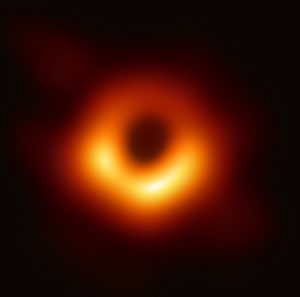 In this podcast, the Radio Free HPC team discusses how the news of the cool visualization of an actual black hole leads to interesting issues in HPC land.
In this podcast, the Radio Free HPC team discusses how the news of the cool visualization of an actual black hole leads to interesting issues in HPC land.
Shahin is at pains to give credit where it is due while considering it as an achievement in data visualization not unlike many others before it. Yes, it’s about a fascinating topic, but that’s also not unlike many others in the past. But the team moves on to the real point: the daunting 1.75 PB of raw data from each telescope meant a lot of physical drives that had to be flown to the data center. Henry leads a discussion about the race between bandwidth and data size, various companies’ plans to launch thousands of satellites to help get away from sneakernet, and the imminent arrival of 5G. We’ve discussed large scale data movement in previous episodes and think it’s an important issue for HPC, AI, and Cloud.
After that, they do their Catch of the Week:
- Shahin is intrigued by this video from LeoLabs that shows the mapping of Space debris. The video shows actual trajectories of 12,401 low Earth objects in space being tracked on August 24, 2017 by LeoLabs’ phased array radars. Video loop shows approx 2 hours of data.
- Dan notes that scientists put human genes into monkeys to make them smarter and more human-like. For the first time, a team of Chinese scientists made use of gene-editing techniques to make monkey brains more human-like. By the end, the monkeys, rhesus macaques, got smarter and had superior memories as compared to the unaltered monkeys.
Finally, the team wonders aloud if this is all a simulation. An MIT professor has said he believes it’s “more likely than not” that we are living in some kind of simulated universe, given that we ourselves are not far away from being capable of creating hyper-realistic simulations ourselves.





Gentlemen,
For your catch of the week….
https://www.pittwire.pitt.edu/news/new-pitt-supercomputer-launch-space